With one 4½-hour flight Friday, the new spacecraft series that NASA
hopes will take astronauts to Mars passed its first test above Earth.
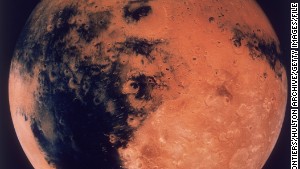 Robot farmers destined for Mars?
Robot farmers destined for Mars?
 Orion capsule could put us on Mars
Orion capsule could put us on Mars
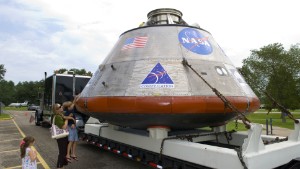 NASA's ticket to Mars
NASA's ticket to Mars
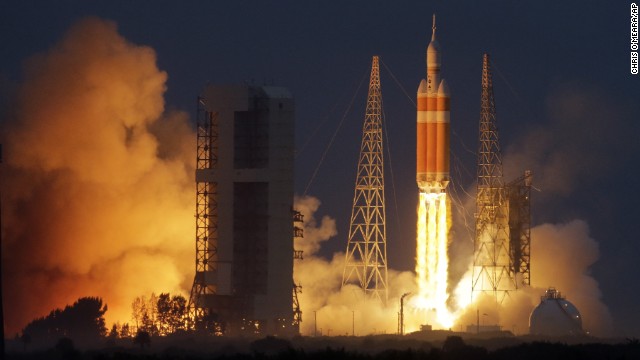 Photos: Orion -- NASA's next giant leap
Photos: Orion -- NASA's next giant leap
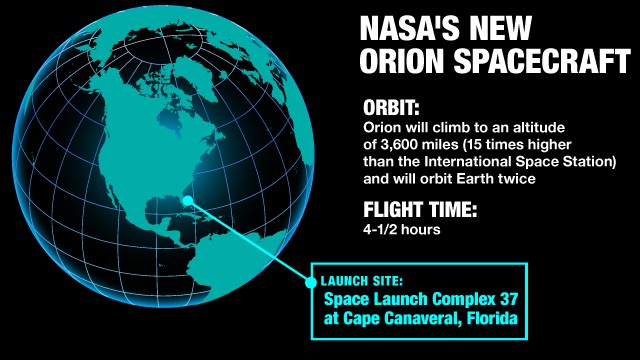 Orion: How high will it climb?
Orion: How high will it climb?
 Orion: Who's on board?
Orion: Who's on board?
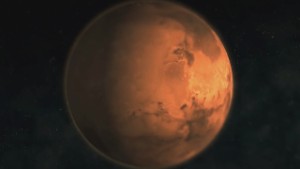 Mars? Is Elon Musk nuts?
Mars? Is Elon Musk nuts?
NASA's Orion capsule --
part of America's bid to take crews beyond low-Earth orbit for the first
time since the Apollo missions -- splashed down in the Pacific Ocean on
Friday morning after lapping the planet twice on an uncrewed test
flight.
The cone-shaped craft,
slowed by a series of parachutes, settled onto the water at 8:29 a.m. PT
(11:29 a.m. ET) about 600 miles southwest of San Diego.
"America has driven a
golden spike as it crosses a bridge into the future," a NASA announcer
said as the capsule bobbed on the ocean's surface during the agency's TV
broadcast of the event.
The flight took Orion
farther from Earth than any craft designed for human flight since the
Apollo 17 mission to the moon in 1972 -- a confidence builder for a
program that NASA hopes will take its first human crew into space in
2021.
 Robot farmers destined for Mars?
Robot farmers destined for Mars?
 Orion capsule could put us on Mars
Orion capsule could put us on Mars
 NASA's ticket to Mars
NASA's ticket to Mars
 Photos: Orion -- NASA's next giant leap
Photos: Orion -- NASA's next giant leap
"It appears that Orion and the Delta IV Heavy (rocket) were nearly flawless," program manager Mark Geyer told reporters.
Orion, a crew module
designed to carry up to six astronauts, soared into the Florida sky at
7:05 a.m. ET from Cape Canaveral atop a Delta IV Heavy rocket. The
assembly shed its boosters before the rocket's second stage lifted Orion
into low-Earth orbit in minutes.
Two hours later, a
milestone: The second stage lifted Orion higher for its second orbit,
about 3,600 miles above Earth, or 15 times higher than the International
Space Station.
"A human-rated system
hasn't gone that far since 1972. ... That reminded us that here we are
again, now, the United States leading exploration out into the solar
system," Geyer said.
After the splashdown, crews from two Navy recovery ships were working to collect the craft.
It was a crucial test for the capsule: NASA wants to prove flight and re-entry abilities before it carries astronauts.
Beyond the moon
The Orion crew module,
which looks like a throwback to the Apollo era, but roomier, could take
astronauts back to the moon, but also far beyond.
One of Orion's tasks might be to send astronauts to an asteroid -- perhaps one that NASA would first robotically redirect to orbit around the moon. NASA says it hopes that Orion, pushed by a more powerful rocket system under development, will send astronauts to an asteroid in the 2020s.
NASA hopes Orion later will send astronauts to Mars' moons, and, eventually, to the Red Planet itself.
 Orion: How high will it climb?
Orion: How high will it climb? Orion: Who's on board?
Orion: Who's on board? Mars? Is Elon Musk nuts?
Mars? Is Elon Musk nuts?
While NASA focuses on
deeper space, private space companies such as SpaceX are expected to
take over the space shuttles' old job of ferrying astronauts and
supplies to the International Space Station in low-Earth orbit.
When it becomes fully
operational, Orion's crew module will be able to carry four people on a
21-day mission into deep space, or six astronauts for shorter missions.
By comparison, the
Apollo crew modules held three astronauts and were in space for six to
12 days. Orion's crew module is 16.5 feet in diameter and Apollo was
12.8 feet in diameter, NASA said.
Data to sift
Friday's launch came a
day after NASA scrubbed its first attempt because of a failure of some
valves in the boosters to close. Those valves, which allow fuel to flow
into the boosters before launch, are supposed to close just before
liftoff.
Engineers and scientists
will examine all sorts of data -- including those collected by on-board
recorders -- to determine how well the capsule performed Friday. This
includes how well the heat shield -- which keeps the capsule from
burning up on re-entry -- held up.
"We know it worked," Geyer said, "but the specifics of how well ... will take time to investigate."
Though Orion's first
flight didn't have people on it, it didn't go up empty. It carried the
names of more than a million people packed on a dime-sized microchip.
"Sesame Street" sent up
some mementos to inspire students about spaceflight, including Cookie
Monster's cookie and Ernie's rubber ducky.
Also aboard: an oxygen
hose from an Apollo 11 lunar spacesuit and a small sample of lunar soil.
A Tyrannosaurus rex fossil from the Denver Science Museum made the
trip, and lockers were filled with flags, coins, patches, poetry and
music.

No comments:
Post a Comment